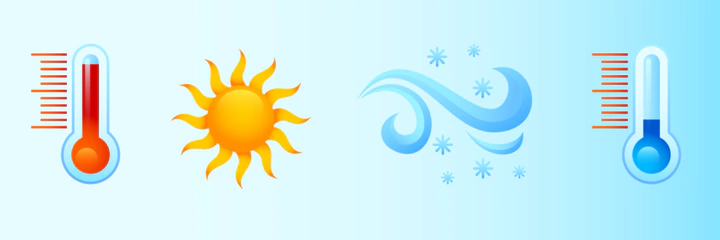Data science and climate change

How can we use data to look for evidence of climate change?
When we think about climate change, temperature is a factor. Here’s a fun fact about temperature scales. When you hear people say, “degrees Fahrenheit”, did you know “Fahrenheit” was a person? Daniel Fahrenheit lived over 300 years ago and invented the mercury thermometer. Even before Fahrenheit, going back to the time of Ancient Greece, people were measuring temperature changes.
We wondered what temperature change looked like in cities across Canada. Let’s look at Edmonton, Alberta. You’ll also see a map that shows temperature increases in the five cities we analyzed (Edmonton, Toronto, Vancouver, Fredericton, and Yellowknife) over the last 100 years.
To answer our question, we:
- Gathered weather data from weatherstats.ca. The website uses data from Environment and Climate Change Canada.
- Created scatter plots from the data (which you’ll see below, for the temperature in Edmonton), to see the temperature changes. These scatter plots are called data visualizations.
- Experimented with different time frames, to look at temperature changes. We chose five-year and 75-year time frames.
- Created a map data visualization to show the temperature increases over the last 100 years in the five cities we analyzed.
You’ll see a red line in the graphs. That’s the trend line – it shows us how much the data is changing over time.
Edmonton, Alberta: Daily temperature changes across five years
Edmonton, Alberta: Yearly temperature changes across 75 years
Temperature changes in the five cities over 100 years
Reflect on what you see
Look and interact with the data visualizations above. When you mouse-over the visualizations, more information appears.
Think about the following questions:
- What do you notice about the data visualizations?
- What do you wonder about the data?
- What do you think may be causing the temperature changes in each city?
Use the fill-in-the-blank prompts to summarize your thoughts:
- “I used to think_______”
- “Now I think_______”
- “I wish I knew more about_______”
- “These data visualizations remind me of_______”
Learn how we visualized the data
Go to our walk-through (in Jupyter notebook format) to see how we used the data science process (formulating a question, gathering the data, analyzing the data with code, and creating the visualizations) to create the data visualizations.